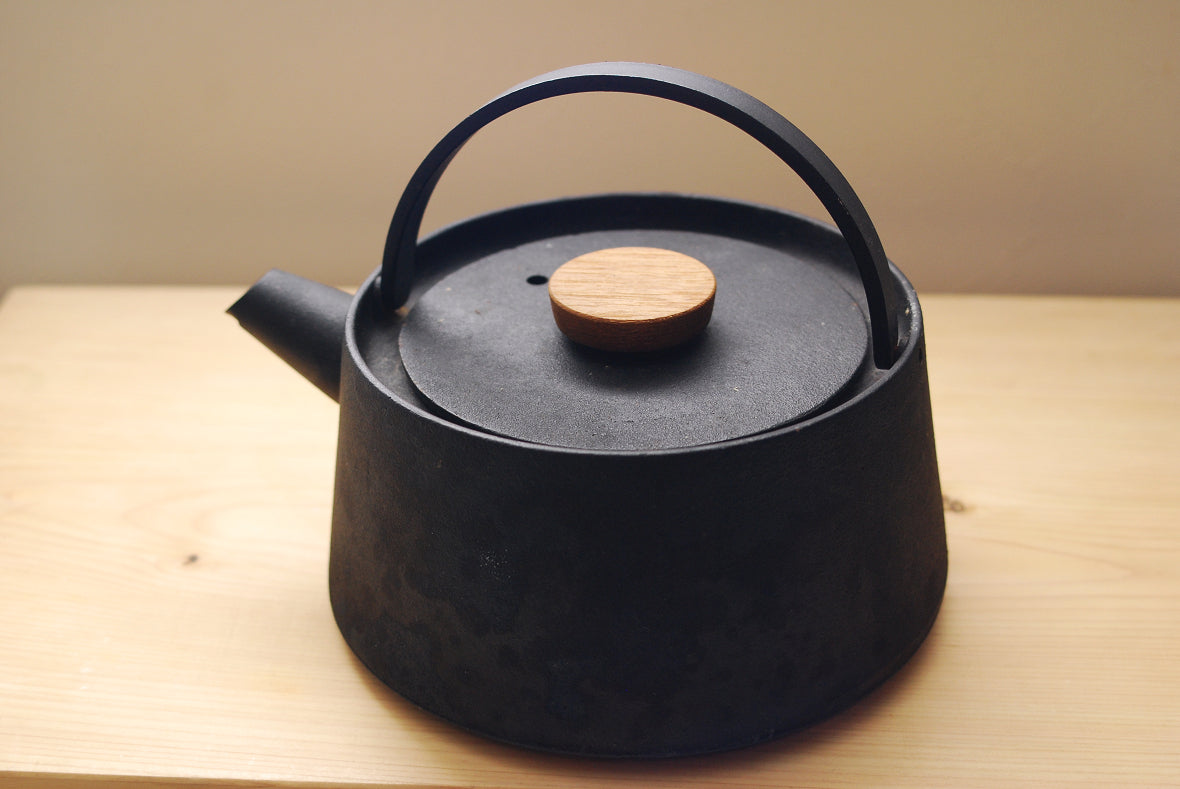The product we used:
There are various kinds of tea in the world. There are many different types of tea leaf or teaware and different ways how to brew tea are all different. Japan has had its own tea culture since ancient times and even now a lot of people love drinking tea.
Today we would like to introduce two differentiated teaware, Tetsukyusu (iron teapot) and Tetsubin (iron kettle) and explain their features and tips for use.
Features and uses of Tetsukyusu

Not a few people would wonder how Tetsukyusu and Tetsubin are different. In fact, both look alike in shape, color and appearance. It might be hard to differentiate them. However, you’ll see the difference once you understand how and for what they are used.

Basically, Tetsukyusu is to brew tea. Small ones are common but there are also big ones (even bigger than Tetsubin). As the inside of Tetsukyusu is finished with enamel coating, you can put tea or hot water in it even for a long time. However, as enamel is a glassy material, it must not be heated over open fire. Again Tetsukyusu is to brew tea, not to boil water.
No special care is needed, and you can just lightly wash the inside with a sponge and dry it.

On the other hand, Tetsubin is to boil water. Unlike Tetsukyusu, you can’t brew tea in Tetsubin because the inside is not enamel-coated, which is the major difference from Tetsukyusu.
As Tetsubin is to boil water, you can use it over open fire. The use and care of Tetsubin is almost same as Tetsukyusu. Remaining water may cause rust, so you need to dry it thoroughly after use. After washing with a sponge, dry its body and lid separately in a well-ventilated place.
Summary
So the main difference between Tetsukyusu and Tetsubin is while the former is to brew tea and must not be used over open fire, the latter is to boil water and can be used over open fire. Also, the water will be softened when boiled in Tetsubin and appropriate for making soup broth with dried bonito or kelp in.
In Europe, hard water is often used for cooking, but it may be difficult to make tasty Japanese style soup broth or brew Japanese green tea with hard water. If you live outside Japan and have an unsuccessful experience to make Japanese style soup broth, you should try Tetsubin to soften water. You’ll find a difference firsthand!
For Japanese green tea, soft water is better too, rather than hard water. Once you get Testu Kyusu and Tetsubin, you can have authentic Japanese style green tea everywhere in the world.






